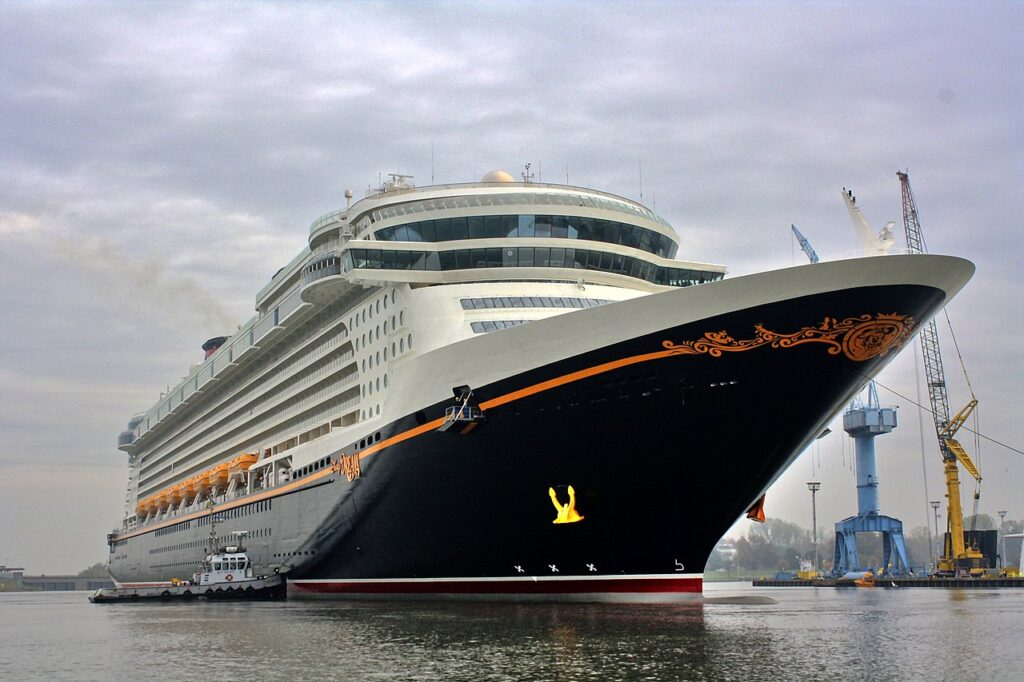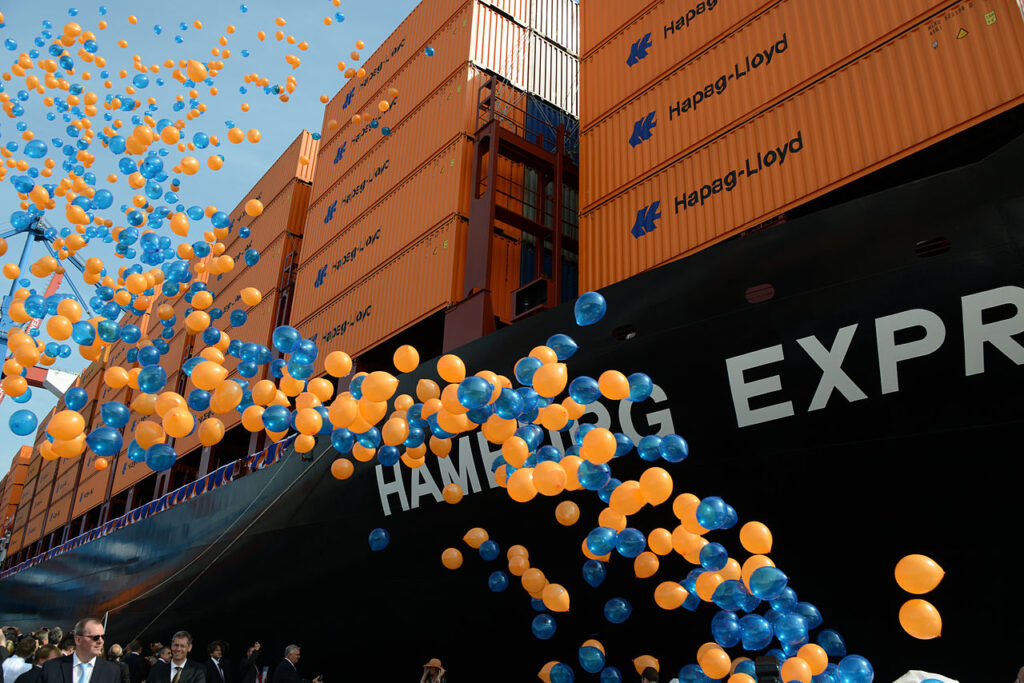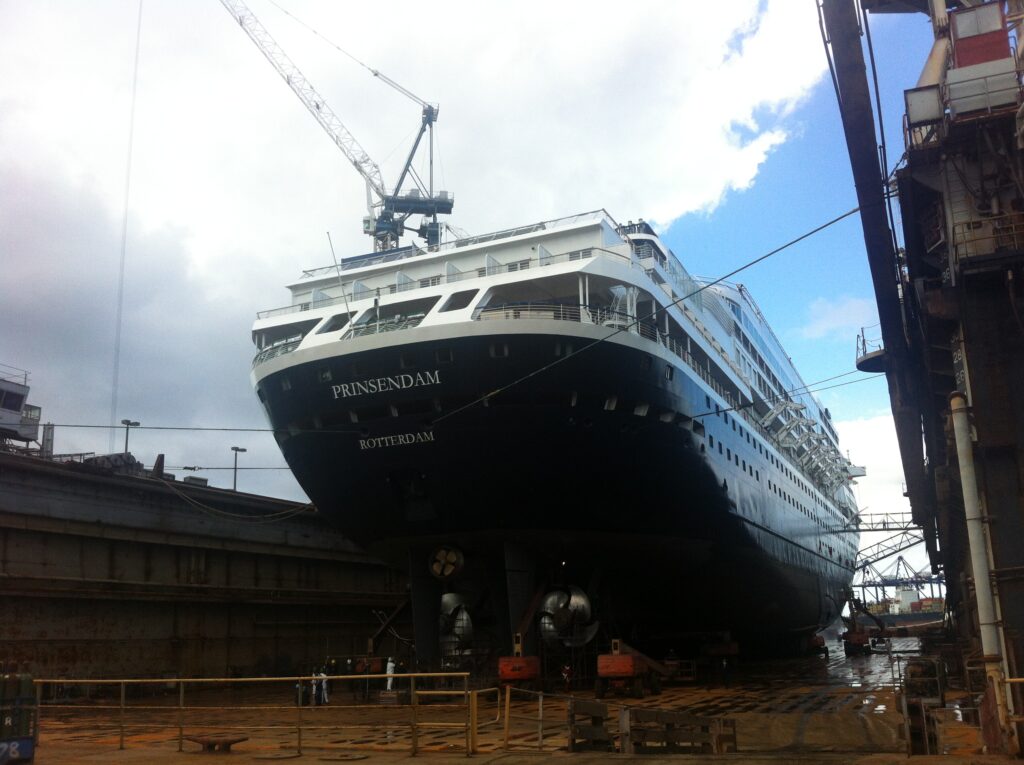Building Cruise Ships: The Ultimate Guide
Since the introduction of the world’s first bona-fide cruise ship Prinzessin Victoria Luise in 1901, cruising has developed into a multi-billion-dollar industry.
There are currently over 320 cruise ships sailing worldwide, which represents only a tiny fraction of the estimated 99,800 cargo ships around the world.
2018 was the busiest year ever for the cruise market. An incredible 26.5 million passengers were carried across all the world’s cruise ships. Shortly after this, numbers plummeted due to the pandemic, but cruise lines are recovering. Many companies downsized their fleets in order to cut costs, selling off older and smaller vessels in favour of larger vessels capable of carrying more passengers.
While cruise ships have a fairly long lifespan – usually at least 25 years – there is a steady need to replace old ships and expand fleets, so shipyards still do good business in building new cruise ships.
Where are most ships built?
According to Statista, there are an estimated 283 shipyards around the world. Asia rules the world when it comes to shipbuilding. South Korea is the leading nation in shipbuilding by tonnage produced, closely followed by China and then Japan. These three nations are responsible for over 80% of new ships by tonnage.
Incredibly, of the 283 shipyards producing merchant ships, there are only four shipyards in the world capable of building modern cruise ships.
| Shipyard | Country | Notable Cruise Ship Built |
|---|---|---|
| Fincantieri | Italy | Queen Elizabeth |
| STX Europe | France | Oasis of the Seas |
| Meyer Werft | Germany | Disney Dream |
| Mitsubishi | Japan | Sapphire Princess |
Fincantieri is the largest shipbuilder in Europe, and the fourth largest shipbuilder in the world. Arguably the leading shipyard for building cruise ships, Fincantieri is responsible for the construction of one third of the world’s cruise ship fleet.
STX Europe has operated under a number of different names, and now builds cruise ships solely in France. The world’s largest cruise ship by gross tonnage, Wonder of the Seas, was completed in their Saint-Nazaire shipyard in January 2022. In the past, STX Europe operated a yard in Finland which constructed ships for Royal Caribbean, TUI Cruises, Viking Line, and others.
Meyer Werft is a German shipbuilding company which has been owned by the Meyer family for seven generations. Their German yards are home to the largest roofed dry docks in the world. Unusually, due to the inland location of Meyer Werft’s shipyard in Papenburg, ships built there must make a 36-kilometre voyage up river Ems to reach open sea once launched. In 2014, Meyer Werft purchased a majority share of STX Europe’s Finnish shipyard.
Mitsubishi Heavy Industries is located in Japan and its Nagasaki shipyard has the smallest output of cruise ships among the four shipbuilders. In 2016, Mitsubishi announced that due to huge losses sustained on previous orders, it would no longer be taking orders for massive passenger ships, instead limiting itself to small and midsize cruise ships.
Cruise companies do not necessarily stick with the same shipyard to build all of their ships. They will opt for the yard which can offer them the best deal in both price and availability. Princess Cruises, for example, have had ships built by Fincantieri, STX Europe, and Mitsubishi.
How to build a cruise ship: a timeline
All cruise companies will have succession plans for each of their ships. These plans may be influenced by market trends and the success of the business, but they will have a general idea of when they intend to order new ships.
Once a company has decided that it wants to build a new cruise ship, it will begin the planning stage around 3-4 years before the ship’s intended launch date. This involves drawing up a rough design of the proposed vessel, with general details such as size, number of passengers, and unique features being decided upon.
The company will then open discussions with some or all of Fincantieri, STX Europe, Meyer Werft, and Mitsubishi to get an idea of the availability and rough price of each yard.
The build cost will vary as material costs in shipbuilding can fluctuate quite a lot. Steel, for example, has seen a large surge in price in the last 18 months. Even the location of the shipyard can incur extra costs – Mitsubishi attributes some of its past losses on building large cruise ships on the fact that it had to import so many parts from Europe to meet European passengers’ preferences.

You may find it surprising how quickly a cruise ship can be built. Considering their size and the attention to detail required in their interior design and finishes, it seems remarkable that a cruise ship can be fully constructed, launched, and ready for passengers in under 12 months. This is achieved by incredible efficiency in the build process.
Approximately 18 months before the planned launch date, the steel cutting ceremony takes place. Although called a ‘ceremony’, this is typically a low-key affair. At the ceremony, the very first plates of steel that will be used in the ship’s construction are cut into shape. After this point, it takes around six months for all of the ship’s steel to be cut into the correct size and shape, ready to be assembled.
Approximately 1 year before the planned launch date, the keel laying ceremony takes place. This is the first major ceremony in a ship’s life and will be attended by executives from the cruise company and the shipyard because this officially marks the exciting first day of the building project after many years of planning.
Traditionally, a keel laying ceremony involved the literal laying of the actual keel – the central piece of timber which made up the backbone of the vessel. In modern ship construction, vessels are built in many small sections which are fabricated and then transported to the dry dock to be welded together, so nowadays the keel laying ceremony will usually consist of the first prefabricated section being placed into the dry dock.
One major part of a cruise ship’s keel laying ceremony is the placing of the coin under the mast. This is the continuation of an ancient ceremony which is believed to date back to Ancient Greece, where the coin was intended to pay the ferryman Charon across the River Styx should the ship sink. These coins are usually placed where they will be visible to passengers, so if you are ever on a cruise ship have a look for it!
You may have noticed that there are a fair few ceremonies involved in the building of a ship. Considering the superstitious and traditional nature of seafaring, it’s not surprising that these ceremonies are still happening today.
After the keel laying ceremony, the ship’s construction really begins. Prefabricated sections of the ship’s hull and superstructure are constructed in yards away from the dry dock before being lifted into place on the keel blocks in the dock and then being welded together, one layer at a time.
As the decks are built up, essentially machinery is also installed. The engines and machinery in cruise ships’ engine rooms are absolutely massive, and this is the easiest way to get them into the belly of the ship, before decks are added above them.
One very important aspect of cruise ships is not installed until the shell of the entire ship is completed, however – the cabins.
All cruise ship cabins are constructed as individual units off-site. Carpet is laid, wardrobes, beds and tables added, and plumbing and wiring installed. Each cabin is in a self-contained metal box, which is crafted to specific measurements so that the cabins all sit flush to one another once installed.
Once constructed, each individual cabin is craned into place and slots into position, its magnetic walls helping it to sit firmly in place.
Once the shell of the ship is completed, it is time to complete the interior work. Public spaces such as atriums, theatres, and restaurants are all fitted out with their equipment before the focus turns to perfecting the aesthetics of the ship’s interior.
Once the exoskeleton of the ship is finished and all cabins are in place, the outside of the ship is painted and the ship’s name is added to the transom and to each side of the bow. Each cruise line has its own colour scheme for the outside of its ships, with AIDA, Norwegian Cruise Line, Cunard, and Holland America Line ships all being immediately recognisable simply from their exterior paintwork.
It is well known that most cruise ships are painted mostly white above the waterline. If you’d like to find out why, check out our video:
You may have noticed that all merchant ships, not just cruise ships, are painted a different colour below the waterline. Check out our video below to learn how using different paint below the waterline can save shipping companies millions of dollars over the lifetime of a ship:
External machinery such as rudders and propellers are also installed at this stage. There are many different types of propulsion used by cruise ships, and they all work in different ways. The fuel efficiency, manoeuvrability, and speed of a cruise ship can vary depending on which type of propulsion she has installed. To learn more about the different types of propulsion that a cruise ship can have, check out our article: Do Ships Have A Reverse Gear?
After over 130,000 hours of planning and 2,000,000 working hours in the shipyard (according to Fincantieri), the ship will be ready to be put into the water for the first time. This is known as the launching ceremony.
In the past, this would be combined with the naming ceremony of the ship. However, cruise companies like to be able to stage these naming ceremonies in their preferred location for marketing and PR purposes, so it is more common for these ceremonies to be staged separately.
Once she is floated, she will undergo sea trials.
Sea trials involve up to three days of intense testing of the ship. Insurers, executives, surveyors, and essential navigational and engineering crew will all be onboard the ship as her manoeuvrability is tested to the limit.
The data collected from these sea trials will be collated and used to create a wheelhouse poster displaying the manoeuvring capabilities of the ship, including crash stop time and distance and turning circle at various speeds and rudder angles.
Once sea trials are complete, the ship’s first crew will come onboard and begin an intense period of familiarising themselves with the ship, drills, and training. If the ship has an identical sister ship already in the fleet, it is common for officers who are familiar with the sister ship to be assigned to the new ship to expedite the learning and training process.
Once the crew are all fully familiarised and the ship has been fully inspected and audited by its Flag State, it will sail to its home port for the biggest ceremony of all – the naming ceremony.
A cruise ship’s naming ceremony is a high-profile affair featuring celebrities, executives from the cruise company and shipyard, journalists, and often royalty. It is a long-standing naval tradition – not restricted to cruise ships – for a godmother to be appointed to the ship.

The ship’s godmother is responsible for smashing a bottle of champagne against the ship’s hull, which is said to bring good luck to the ship and those who sail on her. Conversely, it is said to bring bad luck to a ship if the champagne bottle does not smash on the first attempt.
Of course, that’s just a superstition. By the way, the bottle did not smash during the Costa Concordia’s naming ceremony…
Ships and their godmothers
A wide range of women have been asked to be godmothers to cruise ships in the past. Famous godmothers include Queen Elizabeth II (Queen Mary 2, Queen Elizabeth), Helen Mirren (Ventura), Julie Andrews (Crystal Serenity), and Sophia Loren (eight different MSC ships).
It is not always celebrities who are chosen to be godmothers to cruise ships, however. Some companies have used the title of godmother to honour women who have accomplished great things or who have overcome incredible hardships.
For example, Royal Caribbean chose Katherine Louise Calder to be godmother to the Freedom of the Seas. Katherine had fostered over 400 children with additional needs over three decades, and is certainly deserving of her recognition.
How do cruise ships last so long?
Because they are constantly in the public eye, cruise ships receive a lot more care and attention than most other merchant ships. They have a much higher budget for maintenance and paintwork, and they also go to dry dock more often than cargo ships.
Passenger ships are legally required to dry dock two times every 5 years, with a maximum period of 36 months between dry docks. It is a general rule that ships carrying passengers must adhere to the strictest legislation regarding their architecture, safety, stability, and maintenance.

In dry dock, the ship will undergo essential maintenance that is not possible with passengers onboard, some of which can only be done while the ship is out of the water.
Some of the major dry dock jobs include stripping all of the anti-foul paint off the hull and re-painting it. This not only makes the ship look better, but it also improves fuel efficiency by removing any marine life that had called the ship’s hull home.
Maintenance of major equipment such as the rudder and propeller shafts is undertaken. Anchors are paid out and their chains are re-painted and checked for corrosion. The condition of all the ship’s tanks is also inspected.
With proper planning and maintenance, regular dry docks can extend a cruise ship’s life beyond three decades. As long as the champagne bottle smashes on the first attempt…
